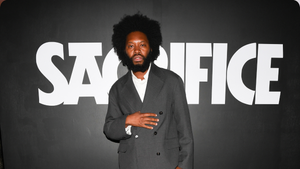Remember when women’s tennis fans (or foes) started saying Martina Navratilova looked like man? I do. And, it still chills me to the bone that as a baby dyke the only out lesbian I knew of— Navratilova—was being castigated for being a strong woman.
“Team Navratilova,” the catch-all for the people populating the tennis superstar’s support system in the bad old days included Renee Richards as her tennis coach. Richards, who grew up as Richard Raskin, is a former professional tennis player whose “sex reassignment surgery” made headlines worldwide. Richards was denied entry into the 1976 US Open. The United States Tennis Association tried to dispense with her by using a newly invented women-born-women only policy. Richards disputed that policy and her ban from professional tennis. The New York Supreme Court ruled in her favor in 1977—a milestone in trans rights in the sports arena.
And, when Navratilova began to work harder at her sport, build her incredible signature musculature and, of course, dare to love women openly, eyebrows were raised and rumors that Navratilova was actually a man surfaced. That was in the late 1970s and early 1980s.
More on next page...
\\\
(continued)
Today, circa 2009, Caster Semenya, an 18-year-old South African runner who won a gold medal in the 800-meter at the world championships in Berlin yesterday, has been targeted for a gender test by the world track governing body. According to the AP, “Her dramatic improvement, muscular build and deep voice sparked speculation about her gender.”
Or is it really sexism and racism at work? I’d say so, just as South African athletics federation president Leonard Chuene does. He believes that fact that Semenya is African is the reason she is being scrutinized so intensely.
“It would not be like that if it were some young girl from Europe,” Chuene told The Associated Press in an interview. “If it was a white child, she would be sitting somewhere with a psychologist, but this is an African child.”
I also believe Semenya is being singled out because she is a gender non conforming person. Semenya is also repeatedly infantilized and referred to in the press as “teenager” and “girl.”
Can you imagine a man—or someone presenting as masculine— being tarred and feathered and having his manhood questioned—and medically and psychologically tested—because…well, I don’t know, he, um, lost to a woman like Bobby Riggs did to Billie Jean King in the infamous Battle of the Sexes tennis match in 1973.
Topendsports.com data states, “Gender testing began at the 1966 European Track & Field Championships, due to suspicion that several of the best women athletes from USSR and Eastern European countries were really men. It was first introduced at the Olympics in 1968, for the Winter Games in Grenoble. However, after years of controversies, compulsory gender testing at the Olympics was officially stopped in 1999.”
It’s always women who are suspect—on the playing field and off.
For more from Stephanie, find her archives here!























































































 Cindy Ord/Getty Images
Cindy Ord/Getty Images























